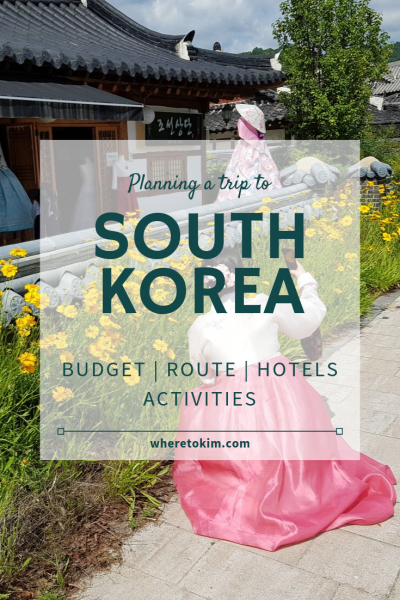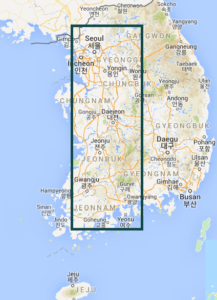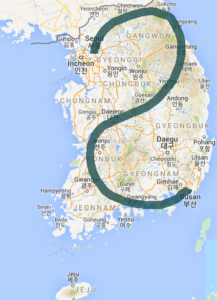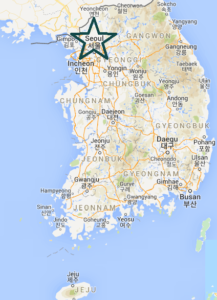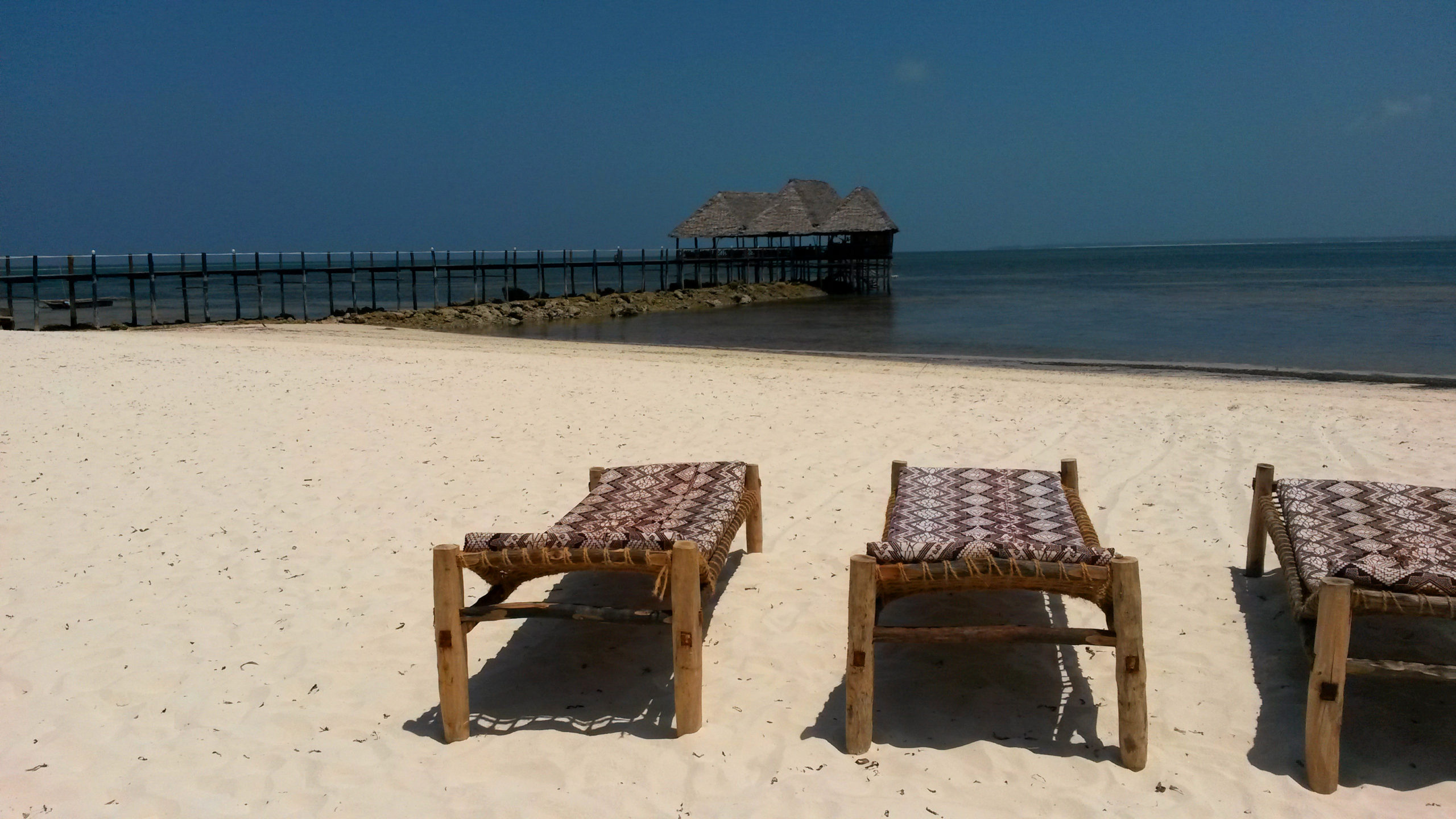Things to consider when planning your own South Korea travel itinerary, like your budget for your trip, travel plan, must-see places, balancing and timing.
I have taken South Korea as an example, but you can also apply this to itineraries to other countries. At the end of this blog post, I’ll list some differences with planning a trip to Japan.
1) Budget for your South Korea trip
The starting point for every travel plan is to determine your budget. Do you want to go backpacking or do you fancy more luxury? Determine the maximum amount of money you want to spend for the whole journey, including food, souvenirs and other small daily expenses. That is your starting point for planning your South Korea trip.
International flight
The easiest thing to start with is your international plane ticket. If you have no flexibility in your travel period, then this is set in stone. Look up the fare on a price comparison website and check your favorite airline directly. If you have some flexibility in your timing, then you can take inspiration from the prices. One day earlier or later can save you hundreds of euros/USD.
Hotel
I usually take 40 EUR a day as an average for hotel costs, using a mix of more expensive traditional houses in rural areas and cheaper motels-turned-hotels in cities. If you go backpacking, you can probably go with 20 – 30 EUR a day.
Food and drinks
For food and drinks, I always assume 30 EUR a day: sometimes I will eat expensive meals with lots of meat and fish and other days I order soup. Interestingly enough, I usually spend more on drinks during the day (especially when it’s above 25 degrees Celsius) than I do on food. You can easily get a meal for 5 EUR and pay the same amount for good coffee or interesting tea.
Wifi
Around 2 EUR a day. For Asia, I always order via Klook.
2) Choosing a travel method
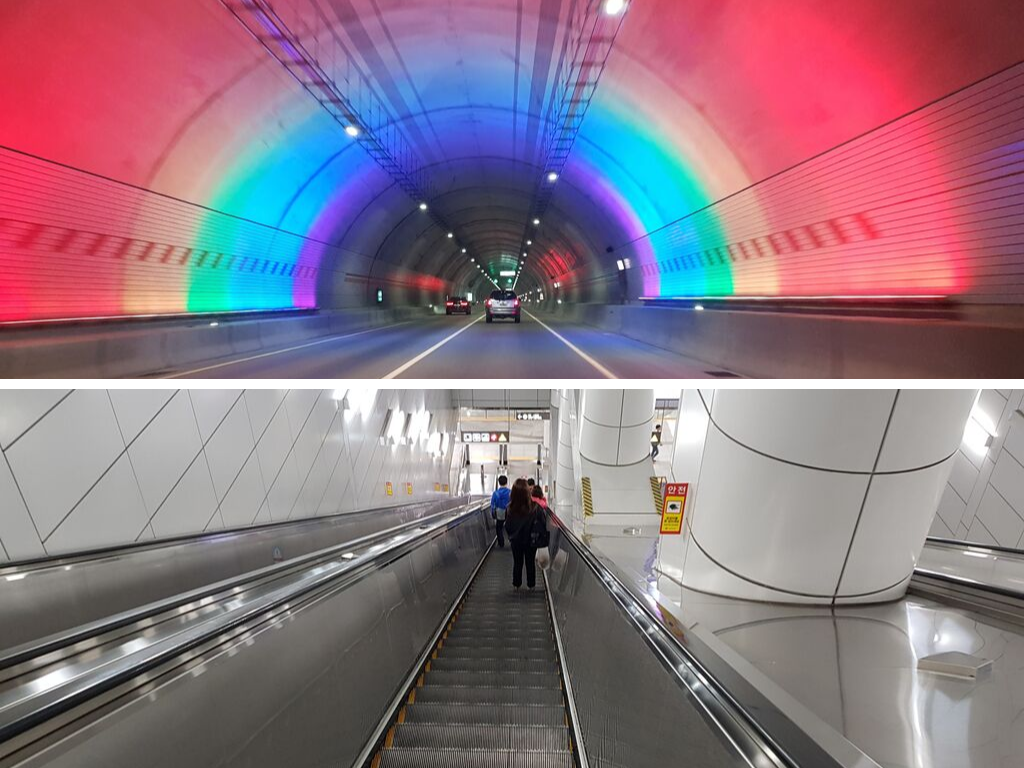
Both traveling by car and public transport are very popular among visitors to South Korea. I usually mix both: public transport in big cities and a rental car between cities. If you don’t have a driver’s license, the choice is easy. For me, the determining factor in choosing to rent a car is that I want to visit more remote places, be able to visit more sites on one day and have scheduling flexibility.
If you don’t have a preference yet, then first pick the places you want to visit in the next step so you can see if your must-see places in South Korea are reachable by public transport.
After you’ve chosen your hotel locations in a later step, you can calculate the costs for using public transport between locations or a rental car and gasoline for the kilometers traveled. For rental cars, it also matters if you travel alone or with a group. For solo travelers, public transport is more cost-effective.
3) Write down your must-see places and make them the cornerstones for your route
You can find many example travel itineraries online which can inspire your own journey. On Where to Kim? I have shared itineraries for seven days in Seoul, the highlights of South Korea and the lesser-known south and west of South Korea, but you can also take inspiration from other blogs, pinterest boards and most of all maps.
On maps from either Google or Kakao, you can filter for historical locations and other highlights and watch pictures and reviews from people all over the world. Activate street view to ‘walk’ around in the area to take in other possible sites to visit and picture-worthy views.
Google Maps
Click on one of the pop-up icons on the map for more information. When you find some good ones, make sure to save them to your account so you can easily find them again later.
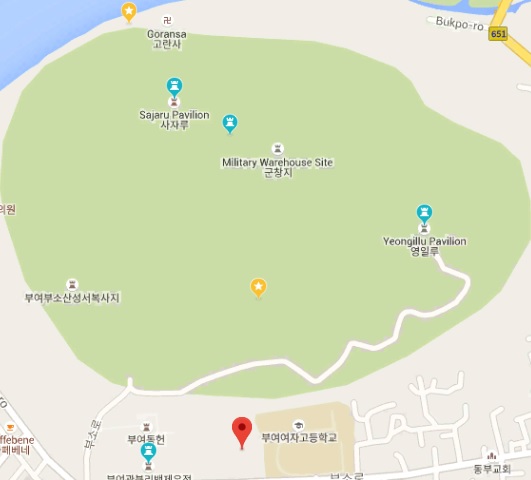
KakaoMap
In KakaoMap you can simply click on any name on the map to get a pop-up with pictures (if available).
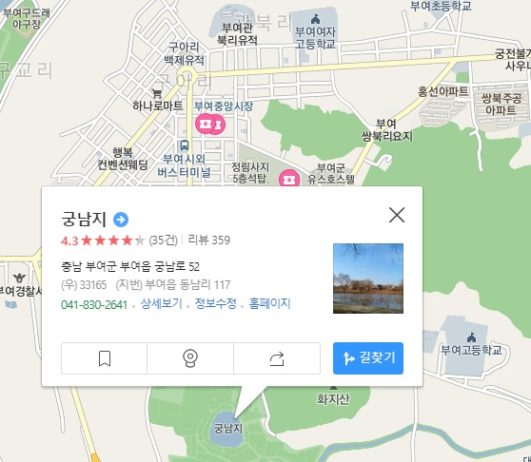
Mark the places you want to visit the most and map them on a map to see how far apart they are. Depending on how much time you have, you might not be able to do them all.
4) South Korea travel route
Look at your must-see places map and see if you can find a pattern. You can do a small circle, big rectangle, semi-straight line or zigzag (S-pattern) through the country. Some examples from my itineraries:
5) Where to stay
Choosing the right location for your hotel
When your must-see places cluster in a certain area, then that area is a good place to stay the night. You often have the choice between staying in the biggest city in the area or going for a more remote location.
When traveling by car, you will probably want to look for a hotel with free parking. The locations matter less, as you can reach any place. For bigger cities it might also be interesting to look for a hotel near an important bus, train or subway station so you can navigate the city by public transport.
When relying on public transport only, a nearby train, bus or subway station becomes more important. You can still stay in more remote locations, but make sure to check public transport routes and times for finding your ideal hotel.
One day or more days at one place
When I first started planning my own itineraries I would often stay only one night at a hotel. Over the years I transitioned to a multi-day stay, usually two or three days per location. An important reason for this is that it is more relaxing to do it this way. Also relevant in this is that I switched from 100% public transport to 80% travel by rental car and only using public transport in big cities. So now I usually pick a location from where I can reach all the nearby places within an hour’s drive. This way I can easily stay at a hotel for three days, avoid the hassle of checking in and out of hotels and moving luggage, while still seeing all the places I want to visit.
If you’re using public transport it might be more practical to switch hotels more often as it is easier to explore the area (especially at night) when your hotel is nearer.
Sightseeing while traveling
Keep in mind that you can also visit your must-see places while traveling from one hotel city to another. So even if you don’t stay overnight, you can still explore the areas you pass through.
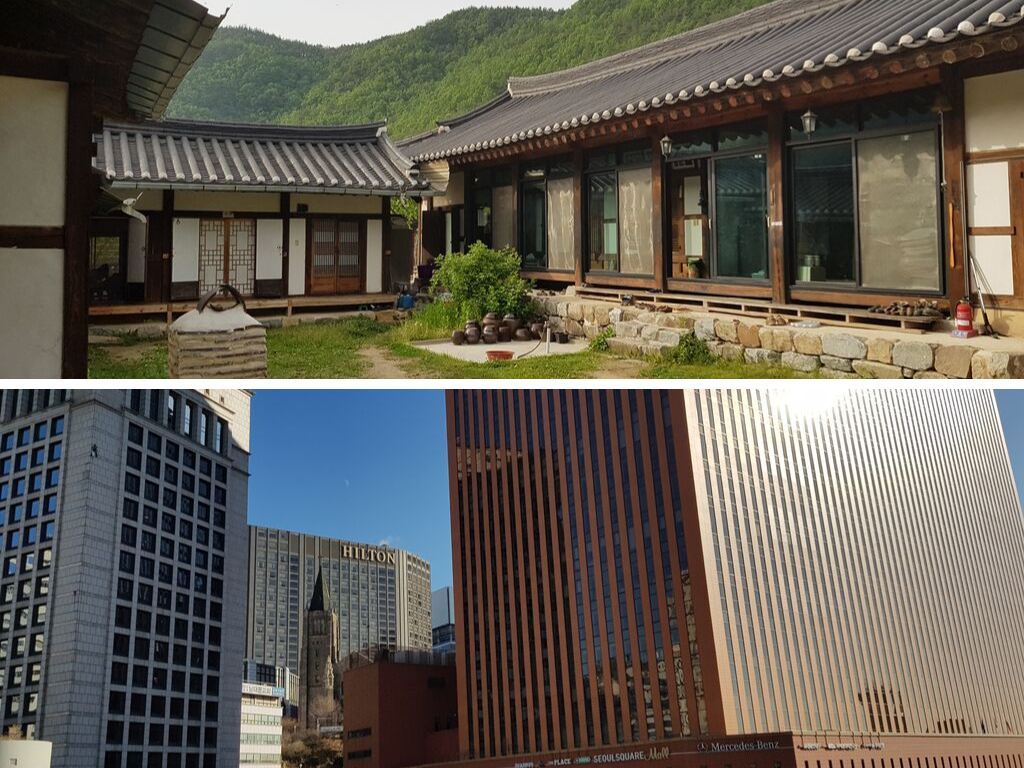
Type of hotel
The offer of hotels on English websites is limited. Many hotels can only be found by searching on a Korean website, but on Agoda and Booking.com you see only a small part of the total offer. In many cases, you can also look for a hotel on the spot and not book in advance. This is practical if you’re looking for motels or hostels, but if you have certain requirements, then advanced booking is recommended. For example, rooms at traditional Korean houses are fully booked many months in advance.
For the ‘real’ Korean experience, a stay at a traditional Korean house is recommended. Often a huge traditional Korean breakfast is included and perhaps also some home-made snacks during the day. Because of the higher price, you will probably only book one or two traditional houses during your entire stay. If you book cheaper hotels on other days, you can stay at traditional Korean houses while keeping your daily accommodation budget below 40 EUR a day. A nice extra is the included breakfast: it is so extensive and well-balanced that you can buy less food for your other meals that day.
Another reason I usually book cheaper hotels in cities is that I hardly spend any time inside my hotel room anyway; I only sleep and shower there, while in more remote areas I often take a few hours to hang around the complex (usually on my own terrace in front of the room).
6) Balance is everything
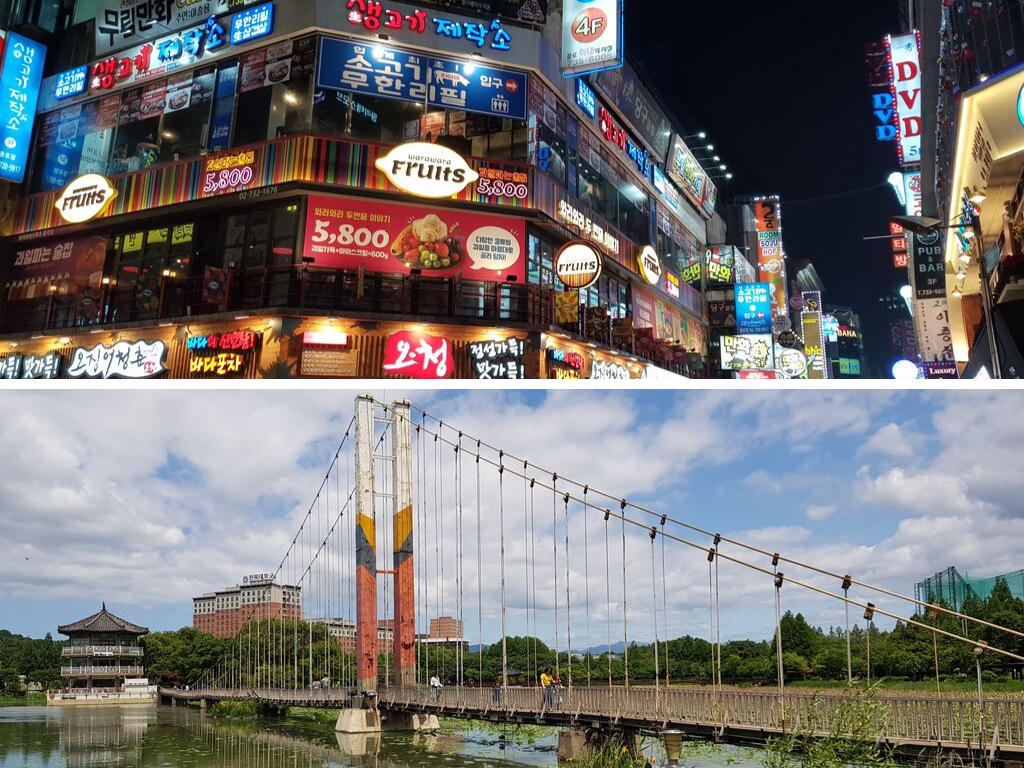
Your personal taste is maybe the most important factor in this: if you simply love big cities, then choose to stay there most of the time. If you are looking for some peace and quiet, look for a rural area. Most people, however, are looking for a balanced trip. So keep the following things in mind:
- Mix culture, history and nature
- Big cities and rural areas
- Larger versus smaller travel distances between hotels
- A day or afternoon for resting in between
- Possibility to switch activities to the previous or next day if the weather requires it
- Luxurious hotels for lounging vs cheap hotels where you only spend the night
7) Timing
If you visit when the seasons are changing, it is good to consider whether you should visit the southern or northern part of the country first. For example: if you visit in October, then it might be a good idea to go north first, as the temperature will start to drop towards the end of the month and by going north first you will enjoy higher temperatures in the north before going south where the temperature drops later. Also relevant are the seasons, you can check when autumn foliage peaks or when flowers start to bloom in spring. This will be different for every area, so plan accordingly. If there is a festival or concert you want to go to, try to be in the right location for those as well. You probably won’t be able to optimize for all your wishes, but try to include as many as you can.
8) Spontaneity
Even if you plan everything in advance, keep in mind that it is your holiday and you are free to just ignore everything you planned to visit and visit whichever place inspires you at the moment.
If you list many optional activities per day, you can choose which one you do considering the weather and what you feel like doing in the morning. There are many temples, historical houses and cable cars all over the country: even though they are all beautiful, you probably don’t want to do all of them unless they hold a special place in your heart.
You don’t have to plan everything in advance, because you can easily do your research while traveling and add new sites to your route. Or just keep driving and see what catches your eye that day and venture into the big unknown.
9) Finding Korean food nearby
One of the things that surprised me the most after visiting South Korea twice is that breakfast seems to be non-existent for first-time visitors to South Korea. Restaurants open after 11 am, hotels don’t always offer breakfast and so on. Breakfast in South Korea was probably my most googled subject during my travels. After the second time though I found my way, so I wrote a blog post about my search for breakfast, which also applies to dinner or any other meal (fish or meat) you want to have.
10) Extra tips: what about planning a trip to Japan?
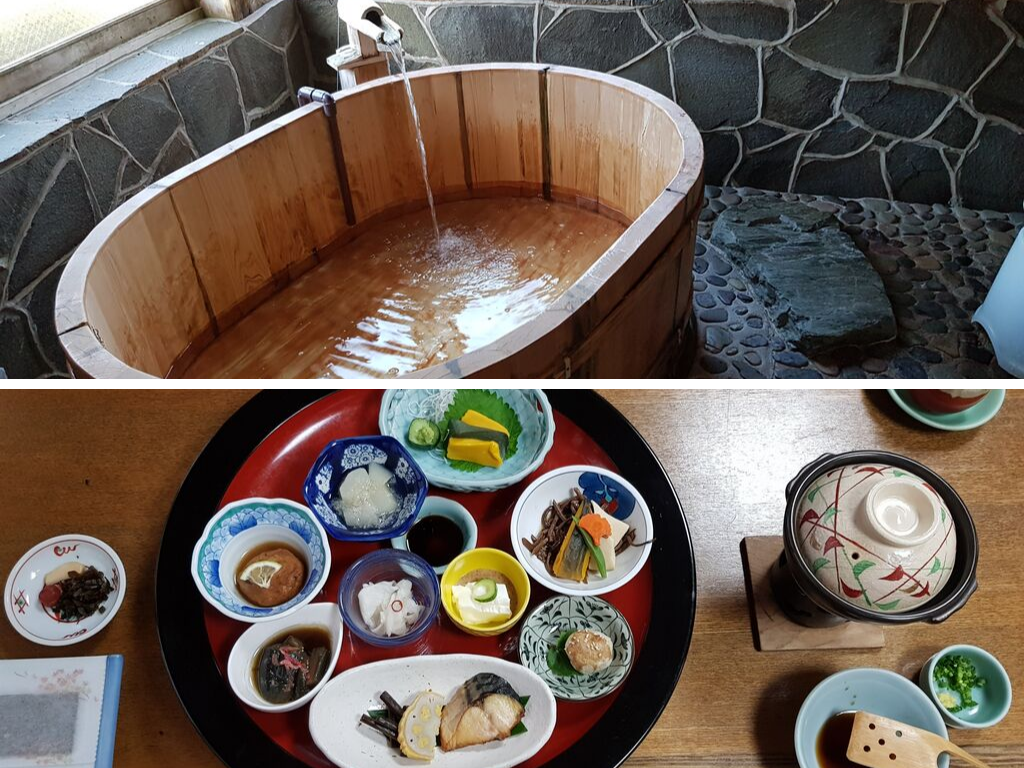
Most of the above applies to planning a trip to Japan as well, but some differences require your attention. Check out my itinerary for Kyushu and Yakushima in the south of Japan, and a route that will show you all the highlights.
- Hotel bedrooms in japan are really small, so look at the square meters listed for a bedroom. If possible, go for twin beds, so you at least have some space around the bed to store your luggage and you don’t end up with a wall directly against all sides of your bed. In South Korea, on average, the hotel rooms were a bit bigger.
- In Japan, people drive on the left side of the road. If you also drive on the left side in your country, you’ll have it easy, but if not, be prepared to activate your windshield wiper instead of your car’s turn signal.
- Many hotels in Japan have onsens. If you like them, keep an eye on that when choosing hotels.
- Breakfast is more often included in hotel plans in Japan (and at a more affordable rate). So your search for breakfast will be much easier in Japan!
